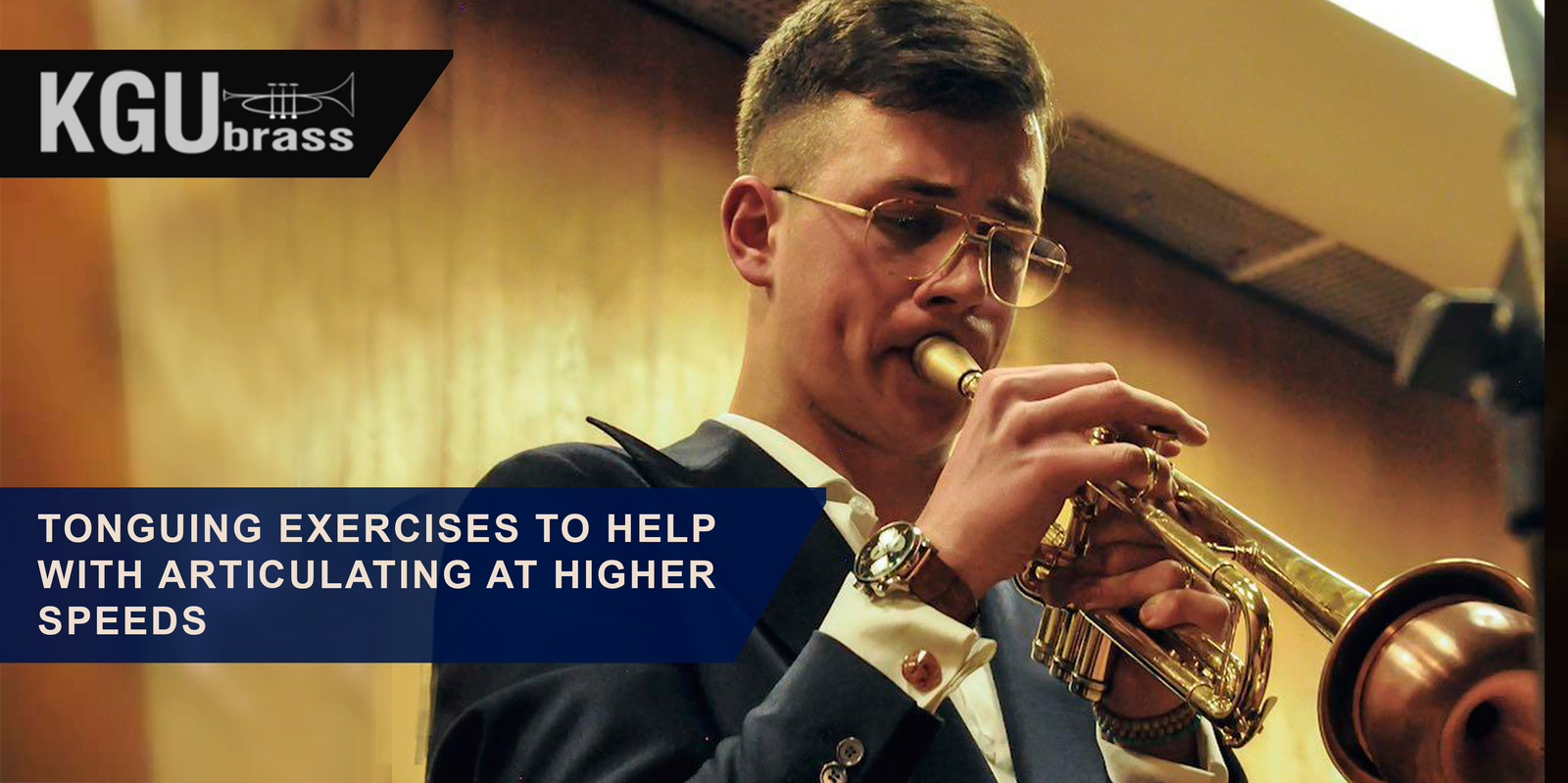Many trumpeters wonder how they could improve their articulation at higher speeds. Articulation is based on the way we articulate the notes. You could stress one or two certain notes in the melody line and that will emphasize the rhythm of the song. When it comes to the question of how the articulation could be improved, you should pay attention to different techniques of tonguing, first. Tonguing is the process when the tongue lets the air stream flow in the mouth or interrupts it. During tonguing, the musician takes a note and doesn’t let the air through by putting a tongue in a way and then by removing it. In practice, that looks like you try to get rid of the tea leaf stuck to a tongue by spitting off, while the tongue stays behind teeth.
Types of tonguing:
- Single tonguing technique is based on pronouncing a silent sound T “tee”.
- Double tonguing is based on using two syllables – silent TK “tee-kee-tee-kee-tee-kee”.
- Triple tonguing is using three silent sounds DTK “tee-dee-kee” or you can also use “doodle-doodle doodle”.
Whatever you choose, you should try to do it accurately, especially if your objective is to tongue faster. It’s important to begin with a single tonguing and keep practicing it until you can do it well. Especially it’s very useful and important for those trumpeters who play or going to play in jazz bands. Because during playing the phrase swings and that could affect the accents. Practicing the double tonguing “tee-kee-tee-kee”, you might have a stronger emphasis on “tee”, but be sure, practice makes the master, and soon you would even it out. Try to make more accents on the second sound “kee”. One day it will be easy for you to make an accent on any note in a line.
Actually, there’s no great difference between the techniques of fast and slow single tonguing. The point is the speed. Practice is the main and only key to make tonguing faster. First, you must improve your tongue muscles to be able to play fast, as at fast speeds it will get tired very quickly.
For instance, talking about tonguing exercises, James Morrison advises to start with a slow tempo: play notes, scale or a song very slowly and loudly, using staccato. This type of exercise gives your tongue muscles a good workout. The more air passes through the way, where you put your tongue, the more strength it demands to stop the stream. It’s like lifting weights when you gradually add more kilos. All you need to turn this slow tonguing into a faster one is to speed up step-by-step after you improve the actual tempo. Keep in mind an important moment: when you start to speed up the notes, you must play them softer.
Do this exercise every day to get more control over the process at single, double or triple tonguing. Regular gradual practice would make it easier for you to play at faster speeds.
Photo by @kajetan_sobieraj on Instagram.



 https://kgumusic.com/pages/about-us
https://kgumusic.com/pages/about-us
1 comment
I am able to SingleTtongue at +- 100 bpm on the trumpet. I also do not have a problem double tonguing, without the trumpet, articulating the “Ta” and “ka” syllables. I find it difficult with Double Tonguing to articulate the “ka” syllable and blow a note simultaneously on the trumpet. The “ka” sound is difficult to pronounce and play a note. Could you please assist me?